#Amazon Web services
Text
Bandai Explains Why They Adopted AWS for Tamagotchi Uni and Why NFC Didn’t Work

The partnership of Tamagotchi and Amazon Web Services is so interesting, and we love hearing more about it. Yuri Okamoto of the Bandai planning team of the Toy Division Global Toy Planning Department, who was in charge of the planning and development of the Tamagotchi Uni at Bandai, and Daisuke Sakammoto of the technical design team of the same department explain further why exactly Bandai adopted AWS for the new Tamagotchi Uni.
Mr. Okamoto explains that the first connectivity method was introduced in 1997 with the Tamagotchi Osutchi and Mesutchi. The purpose of this connectivity was for one character to be able to cross over into the other device.

Then in March of 2004, after the explosive boom of Tamagotchi calmed down, the Tamagotchi Plus model was introduced with new infrared communication. The infrared technology functionality was the exact function that was tailored in the heyday of feature phones in Japan, and it was possible not only to connect two Tamagotchi’s together, but also to mobile phones.

Newer models also introduced different types of connectivity, including NFC with the Tamagotchi 4U in 2014. NFC was aimed to allow Tamagotchi’s to connect together by touching the devices together. However, the communication speed of NFC was not very fast, so it did not become a user experience the communication would end when touched.

Tamagotchi M!X back in 2016 brought back the infrared connectivity. The Tamagotchi Meets back in 2018 then introduced Bluetooth connectivity on top of the infrared functionality which enable the ability to connect to a smartphone or tablet to use the application.
The Tamagotchi Smart which was released in the midst of the COVID-19 global pandemic where contact with people was suppressed. The Tamagotchi Smart allowed caretakers to interact with their Tamagotchi with the use of voice and touch, along with wearing your Tamagotchi Smart right on your wrist.

Mr. Okamoto then discusses how the Tamagotchi demand has been higher overseas than in Japan. The Tamagotchi Uni was sought out to unify the design and content of play sot hat Tamagotchi users around the world can enjoy the same Tamagotchi Uni globally.

The Tamagotchi Uni also introduced Wi-Fi for the first time. This enables the new Tamaverse feature, software updates, and more. There are a wide range of functions that should be independently implemented in the cloud infrastructure to realize the concept of the Tamagotchi Uni. AWS has great infrastructure capabilities and a range of sample documents to advance development.
Monoist asks if future models after the Tamagotchi Uni will feature cloud connectivity. Mr. Okamoto responds that there alway needs to be the core play that has always been featured in the Tamagotchi, and Bandai will consider how to do that with both hardware and software. So the cloud is not necessarily a requirement for the next generation model.
#tamapalace#tamagotchi#tmgc#tamatag#virtualpet#bandai#jp#yuriokamoto#yuri okamoto#daisukesakamoto#daisuke sakamoto#monoist#aws#amazonwebservices#amazon web services#nfc
26 notes
·
View notes
Text

The story of a 13-year-old Nigerian programmer, Joshua Agboola, who just emerged as the youngest Certified Amazon Web Services (AWS) Developer Associate in Africa, should gladden the hearts of most patriotic Nigerians.
This achievement reminds us of the immeasurable roles that education plays in the life of every child. His success story should also inspire our youths to strive hard to develop their skills and seek to always become better in their fields through continuous learning and improvement.
There is far more honour in the success achieved by utilising talents positively. If leadership inspires hope through competence and transparency with productivity as key goals, our leaders of tomorrow will be directed towards making positive use of their talents instead of diverting efforts to criminality. Moreover, the recent strides of our youths in the areas of Information Technology indicate that we as a people are ready to partake in the benefits of modern technology.
Dear Joshua, I celebrate you today for your outstanding achievement. You have made a name for yourself and our nation. I urge you to remain focused on building a great future for yourself and a better society for all.
#agboola#amazon web services#african#afrakan#kemetic dreams#brownskin#afrakans#africans#brown skin#nigerian#nigerians
40 notes
·
View notes
Text
95/366
07 April 2024
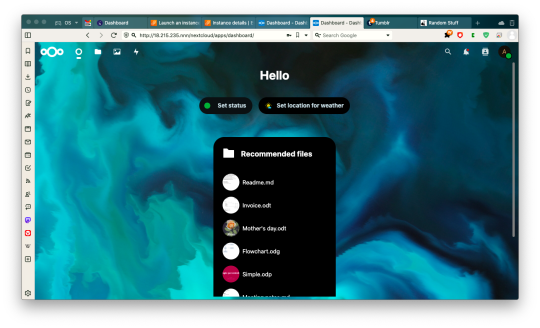
Setelah kemarin coba pake Google Cloud Platform dengan segala kemudahan sat setnya. kini mencoba pake Amazon Web Services (AWS) dengan segala pengaturan yang njlentreh apa aja ada.
Pake yang Free tier, dengan speed yang 'disesuaikan' cukup laah untuk bangun nextcloud di EC2.
Mari coba running, paling tidak untuk beberapa jam kedepan.
[update]

Setelah beberapa jam di 'panjer'. ada beberapa case yang belum resolve, yakni masalah bad gateway dan ini..
3 notes
·
View notes
Text
Virtual Private Cloud (VPC) Flow Logs in Amazon Web Services (AWS) is an indispensable feature for developers, network administrators, and cybersecurity professionals. It provides a window into the network traffic flowing through your AWS environment, providing the visibility needed to monitor, troubleshoot, and secure your applications and resources efficiently.
2 notes
·
View notes
Text
Power of Natural Language Processing with AWS
Dive into the world of Natural Language Processing on AWS and learn how to build intelligent applications with services like Amazon Comprehend, Transcribe, and Polly. Explore the future of language-driven AI and cloud computing #AWSNLP #AI #CloudComputing
Natural Language Processing (NLP) has emerged as a transformative force in the realm of artificial intelligence, enabling computers to comprehend and generate human-like text. As businesses increasingly recognize the value of language-driven insights and applications, cloud platforms such as Amazon Web Services (AWS) have played a pivotal role in democratizing access to advanced NLP capabilities.…

View On WordPress
#AI Development#AI Services#Amazon API Gateway#Amazon Comprehend#Amazon Lex#Amazon Polly#Amazon Transcribe#Amazon Translate#amazon web services#aws#AWS Lambda#chatbot development#Cloud Computing#Cloud Services#Conversational Interfaces#Language Processing Applications#Language Understanding#Machine Translation#natural language processing#Neural Machine Translation#NLP#sentiment analysis#speech recognition#Text Analysis#text-to-speech#Voice Interfaces
4 notes
·
View notes
Text

Well honestly what the heck? Amazon.
#brain juice raw#its kinda funny tho#amazon web services#bit crushed#this is like the ultimate jpeg compression
3 notes
·
View notes
Text
youtube
#Firewall#AWS WAF#AWS Web Application Firewall#WAF#Web Application Firewall#AWS#Amazon#Amazon Web Services#Youtube
2 notes
·
View notes
Text
Que a Amazon Está Quebrando!
O maior erro da Amazon, é por isso que a Amazon está quebrando! Em 1995, muito poucas pessoas poderiam prever que a pequena livraria online de Jeff Bezos um dia se tornaria um gigante de US$1,7 trilhões que vende de tudo. De fraldas a sofás, produz filmes, possui uma rede de supermercados e fornece serviços de computação em nuvem para empresas em todo o mundo. No entanto, este gigante do varejo está enfrentando vários problemas. De fato, o preço das ações da Amazon caíram, assim como os seus ganhos, por causa da epidemia. E agora está sendo negociado no nível em que estava antes do Covid-19, que marca bilhões de dólares em perdas.
#a Amazon está quebrando#amazon#amazon prime#amazon stock#amazon stock analysis#amazon stock prediction#Amazon Web Services#amzn#amzn stock#amzn stock analysis#Andy Jassy#Best Buy#Bill Gates#brandstory#business#business ideas#business stories#businessstory#Comitê Judiciário da Câmara#como a Amazon trata os funcionários#Elon Musk#elon musk brasil#empreendedorismo#entrepreneurship#Facebook#future of amazon#gigante do varejo#itens que usam a marca Amazon#Jeff Bezos#lucro da Amazon
2 notes
·
View notes
Text
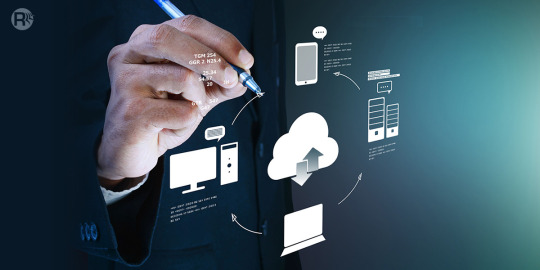
Why Choose AWS Cloud for Enterprise Cloud Applications Development?
Searching for a technology partner for AWS. We are a reliable provider of AWS application development & consulting services. We help develop custom cloud applications with competency in DevOps, Managed Cloud Services, and Cloud Migration with a well-architected framework.
11 notes
·
View notes
Text
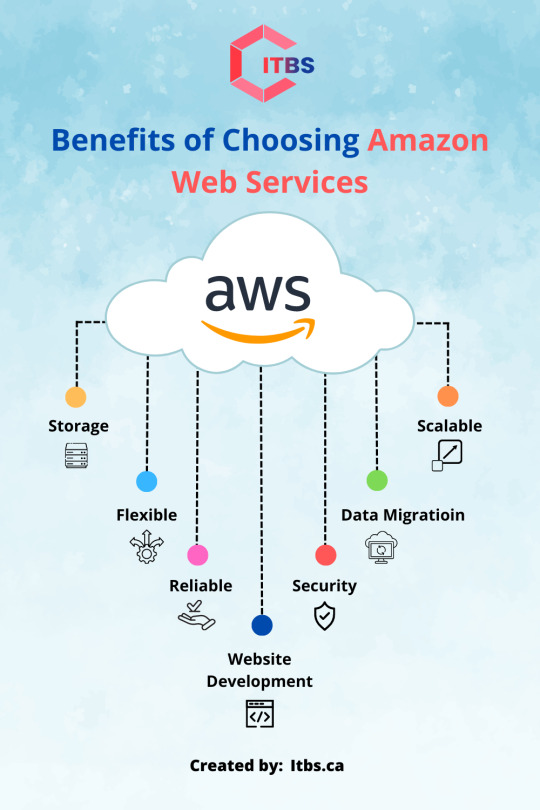
Amazon Web Services Advantages
The excellent option is Amazon Web Services (AWS). Amazon Web Services (AWS) is a fantastic option if you're searching for a dependable, secure, and effective cloud platform to host your business apps. One of the most widely used cloud computing platforms, AWS, has a number of benefits. We discussed AWS's many advantages in this image, along with the reasons why it is the ideal cloud computing platform.
1 note
·
View note
Text
Tamagotchi Uni Uses AWS, Amazon Web Services

The Tamagotchi Uni is the first Tamagotchi to ever connect to Wi-Fi, which enables it to receive over the area updates, programing changes, and more. How exactly is this all being done by Bandai Japan? Well Bandai has built the Tamagotchi Uni on the Amazon Web Services platform (AWS).
The details of this are actually outlined on a recent article on the Amazon Web Services blog. The blog post provided a detailed view on how Tamagotchi Uni use AWS to achieve secure and reliable connectivity and quickly deliver new content updates without leaving customers waiting.It details that Bandai Co., Ltd., the company responsible for product development and sales, adopted AWS IoT to realize the concept of globally interconnected Tamagotchi, enabling users to interact with each other.
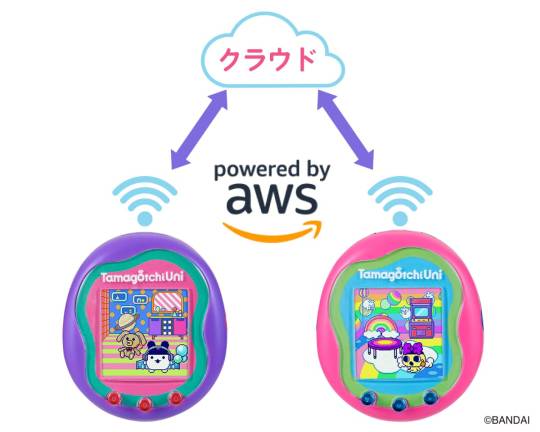
Bandai partnered with their cloud development partner, Phoenisys, Inc., to connect and manage million of Tamagotchi devices. One of the critical features was the over the air software updates which uses the jobs feature of AWS IoT Device Management to distribute the latest firmware across all Tamagotchi devices without causing any delays to customers.
To make Tamagotchi Uni IoT-enabled, Bandai establish the three key goals, which was implementing secure connections, scaling the load-balancing resources to accommodate over 1 million connections worldwide, and optimizing operational costs. The article even features the AWS architecture for the Tamagotchi Uni, which is interesting.
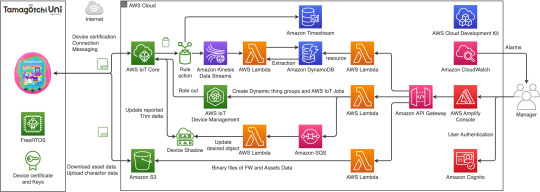
AWS IoT Core is used to manage the state of each Tamagotchi Uni device, which helps retrieve distributed items and content. AWS IoT Device Management is used to index the extensive Tamagotchi Uni fleet and create dynamic groups on the state of each device, facilitating efficient over-the-air (OTA) updates. FreeRTOS is used to minimize the amount of resources and code required to implement device-to-cloud communication for efficient system development. AWS Lambda is used to process tasks, delivering new announcements, and registering assets. Amazon DynamoDB is used as a fully managed, sever less, key-value noSQL database that runs high-performance applications at any scale. Amazon Simple Storage Service (Amazon S3) is used for object storage service, each of these data stores are used to manage the various resources within Tamagotchi Uni. Lastly, Amazon Timestream is used to accumulate historical data of user’s actions like downloading items and additional content.
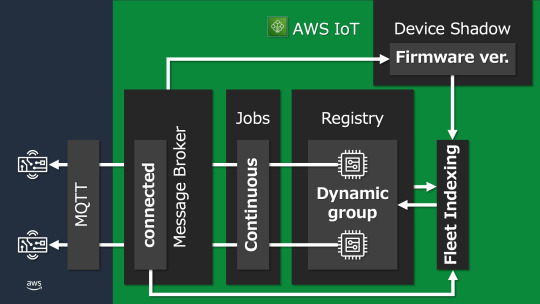
The article also details how Bandai is handling large scale firmware updates to Tamagotchi Uni devices which are executed at a rate of 1,000 units per hour which would have resulted in a delay for some devices. The team actually designed job delivery as a continuous job which automatically updates the devices under certain conditions. This is using fleet indexing that runs a query to see which devices meet the criteria for the update to be pushed out to it.
Lastly the article details how Bandai conducted system performance testing at a large-scale to emulate what it would be like after the device was released. They verified the smooth operation and performance of updates through their testing.
Be sure to check out the full article here on the Amazon AWS blog.
#tamapalace#tamagotchi#tmgc#tamagotchiuni#tamagotchi uni#uni#tamatag#virtualpet#bandai#amazonaws#amazon aws#aws#amazonwebservices#amazon web services#blog
14 notes
·
View notes
Link

#amazon#amazonagency#amazon shop#amazon web services#home sellers#marketing#Specialist#BUSINESS#SEO optimization#Product sales#e-commerce amazon#walmart
2 notes
·
View notes
Text
How the Internet is Surreptitiously Governed by Amazon Technology

When you hear about Amazon, what is the first thing that springs to mind?
The majority of you definitely picture the well-known online retailer where you can get anything you want, but that is merely the top of a much larger organization.
Despite being one of the most influential businesses in the entire world economy, Amazon's primary source of funding is not a well-known retailer. Why does the business make billions and even assert that it owns the internet?
Last year, Amazon.com brought in a record 282 billion dollars. How come the net profit was only 5.6 billion, do you think? Also, keep in mind that it was Amazon.com's most successful year ever. Amazon Web Service, a less well-known aspect of its business, accounted for the majority of its profits.
What then is this essentially unknown service to the general public?
The Amazon cloud subsidiary offers services to more than a million businesses globally. Although you might have heard that it has something to do with cloud storage, it has much more to do with it.
Learn more here>>
#amazon#delivery#services#transportation#company#economy#employees#alibaba#microsoft#amazon web services#amazon prime#usa#technology#internet#google#dollar
3 notes
·
View notes
Text
Vivek Desai, Chief Technology Officer, North America at RLDatix – Interview Series
New Post has been published on https://thedigitalinsider.com/vivek-desai-chief-technology-officer-north-america-at-rldatix-interview-series/
Vivek Desai, Chief Technology Officer, North America at RLDatix – Interview Series
Vivek Desai is the Chief Technology Officer of North America at RLDatix, a connected healthcare operations software and services company. RLDatix is on a mission to change healthcare. They help organizations drive safer, more efficient care by providing governance, risk and compliance tools that drive overall improvement and safety.
What initially attracted you to computer science and cybersecurity?
I was drawn to the complexities of what computer science and cybersecurity are trying to solve – there is always an emerging challenge to explore. A great example of this is when the cloud first started gaining traction. It held great promise, but also raised some questions around workload security. It was very clear early on that traditional methods were a stopgap, and that organizations across the board would need to develop new processes to effectively secure workloads in the cloud. Navigating these new methods was a particularly exciting journey for me and a lot of others working in this field. It’s a dynamic and evolving industry, so each day brings something new and exciting.
Could you share some of the current responsibilities that you have as CTO of RLDatix?
Currently, I’m focused on leading our data strategy and finding ways to create synergies between our products and the data they hold, to better understand trends. Many of our products house similar types of data, so my job is to find ways to break those silos down and make it easier for our customers, both hospitals and health systems, to access the data. With this, I’m also working on our global artificial intelligence (AI) strategy to inform this data access and utilization across the ecosystem.
Staying current on emerging trends in various industries is another crucial aspect of my role, to ensure we are heading in the right strategic direction. I’m currently keeping a close eye on large language models (LLMs). As a company, we are working to find ways to integrate LLMs into our technology, to empower and enhance humans, specifically healthcare providers, reduce their cognitive load and enable them to focus on taking care of patients.
In your LinkedIn blog post titled “A Reflection on My 1st Year as a CTO,” you wrote, “CTOs don’t work alone. They’re part of a team.” Could you elaborate on some of the challenges you’ve faced and how you’ve tackled delegation and teamwork on projects that are inherently technically challenging?
The role of a CTO has fundamentally changed over the last decade. Gone are the days of working in a server room. Now, the job is much more collaborative. Together, across business units, we align on organizational priorities and turn those aspirations into technical requirements that drive us forward. Hospitals and health systems currently navigate so many daily challenges, from workforce management to financial constraints, and the adoption of new technology may not always be a top priority. Our biggest goal is to showcase how technology can help mitigate these challenges, rather than add to them, and the overall value it brings to their business, employees and patients at large. This effort cannot be done alone or even within my team, so the collaboration spans across multidisciplinary units to develop a cohesive strategy that will showcase that value, whether that stems from giving customers access to unlocked data insights or activating processes they are currently unable to perform.
What is the role of artificial intelligence in the future of connected healthcare operations?
As integrated data becomes more available with AI, it can be utilized to connect disparate systems and improve safety and accuracy across the continuum of care. This concept of connected healthcare operations is a category we’re focused on at RLDatix as it unlocks actionable data and insights for healthcare decision makers – and AI is integral to making that a reality.
A non-negotiable aspect of this integration is ensuring that the data usage is secure and compliant, and risks are understood. We are the market leader in policy, risk and safety, which means we have an ample amount of data to train foundational LLMs with more accuracy and reliability. To achieve true connected healthcare operations, the first step is merging the disparate solutions, and the second is extracting data and normalizing it across those solutions. Hospitals will benefit greatly from a group of interconnected solutions that can combine data sets and provide actionable value to users, rather than maintaining separate data sets from individual point solutions.
In a recent keynote, Chief Product Officer Barbara Staruk shared how RLDatix is leveraging generative AI and large language models to streamline and automate patient safety incident reporting. Could you elaborate on how this works?
This is a really significant initiative for RLDatix and a great example of how we’re maximizing the potential of LLMs. When hospitals and health systems complete incident reports, there are currently three standard formats for determining the level of harm indicated in the report: the Agency for Healthcare Research and Quality’s Common Formats, the National Coordinating Council for Medication Error Reporting and Prevention and the Healthcare Performance Improvement (HPI) Safety Event Classification (SEC). Right now, we can easily train a LLM to read through text in an incident report. If a patient passes away, for example, the LLM can seamlessly pick out that information. The challenge, however, lies in training the LLM to determine context and distinguish between more complex categories, such as severe permanent harm, a taxonomy included in the HPI SEC for example, versus severe temporary harm. If the person reporting does not include enough context, the LLM won’t be able to determine the appropriate category level of harm for that particular patient safety incident.
RLDatix is aiming to implement a simpler taxonomy, globally, across our portfolio, with concrete categories that can be easily distinguished by the LLM. Over time, users will be able to simply write what occurred and the LLM will handle it from there by extracting all the important information and prepopulating incident forms. Not only is this a significant time-saver for an already-strained workforce, but as the model becomes even more advanced, we’ll also be able to identify critical trends that will enable healthcare organizations to make safer decisions across the board.
What are some other ways that RLDatix has begun to incorporate LLMs into its operations?
Another way we’re leveraging LLMs internally is to streamline the credentialing process. Each provider’s credentials are formatted differently and contain unique information. To put it into perspective, think of how everyone’s resume looks different – from fonts, to work experience, to education and overall formatting. Credentialing is similar. Where did the provider attend college? What’s their certification? What articles are they published in? Every healthcare professional is going to provide that information in their own way.
At RLDatix, LLMs enable us to read through these credentials and extract all that data into a standardized format so that those working in data entry don’t have to search extensively for it, enabling them to spend less time on the administrative component and focus their time on meaningful tasks that add value.
Cybersecurity has always been challenging, especially with the shift to cloud-based technologies, could you discuss some of these challenges?
Cybersecurity is challenging, which is why it’s important to work with the right partner. Ensuring LLMs remain secure and compliant is the most important consideration when leveraging this technology. If your organization doesn’t have the dedicated staff in-house to do this, it can be incredibly challenging and time-consuming. This is why we work with Amazon Web Services (AWS) on most of our cybersecurity initiatives. AWS helps us instill security and compliance as core principles within our technology so that RLDatix can focus on what we really do well – which is building great products for our customers in all our respective verticals.
What are some of the new security threats that you have seen with the recent rapid adoption of LLMs?
From an RLDatix perspective, there are several considerations we’re working through as we’re developing and training LLMs. An important focus for us is mitigating bias and unfairness. LLMs are only as good as the data they are trained on. Factors such as gender, race and other demographics can include many inherent biases because the dataset itself is biased. For example, think of how the southeastern United States uses the word “y’all” in everyday language. This is a unique language bias inherent to a specific patient population that researchers must consider when training the LLM to accurately distinguish language nuances compared to other regions. These types of biases must be dealt with at scale when it comes to leveraging LLMS within healthcare, as training a model within one patient population does not necessarily mean that model will work in another.
Maintaining security, transparency and accountability are also big focus points for our organization, as well as mitigating any opportunities for hallucinations and misinformation. Ensuring that we’re actively addressing any privacy concerns, that we understand how a model reached a certain answer and that we have a secure development cycle in place are all important components of effective implementation and maintenance.
What are some other machine learning algorithms that are used at RLDatix?
Using machine learning (ML) to uncover critical scheduling insights has been an interesting use case for our organization. In the UK specifically, we’ve been exploring how to leverage ML to better understand how rostering, or the scheduling of nurses and doctors, occurs. RLDatix has access to a massive amount of scheduling data from the past decade, but what can we do with all of that information? That’s where ML comes in. We’re utilizing an ML model to analyze that historical data and provide insight into how a staffing situation may look two weeks from now, in a specific hospital or a certain region.
That specific use case is a very achievable ML model, but we’re pushing the needle even further by connecting it to real-life events. For example, what if we looked at every soccer schedule within the area? We know firsthand that sporting events typically lead to more injuries and that a local hospital will likely have more inpatients on the day of an event compared to a typical day. We’re working with AWS and other partners to explore what public data sets we can seed to make scheduling even more streamlined. We already have data that suggests we’re going to see an uptick of patients around major sporting events or even inclement weather, but the ML model can take it a step further by taking that data and identifying critical trends that will help ensure hospitals are adequately staffed, ultimately reducing the strain on our workforce and taking our industry a step further in achieving safer care for all.
Thank you for the great interview, readers who wish to learn more should visit RLDatix.
#ai#Algorithms#Amazon#Amazon Web Services#America#Articles#artificial#Artificial Intelligence#AWS#Bias#Blog#board#Building#Business#certification#challenge#change#Cloud#Collaboration#collaborative#college#compliance#computer#Computer Science#concrete#credentials#CTO#cybersecurity#data#data strategy
0 notes

